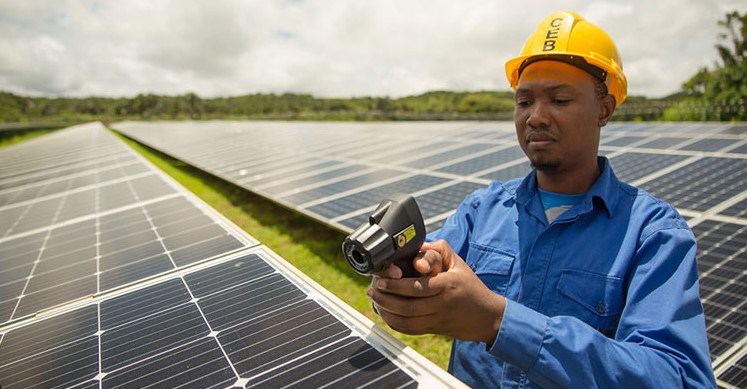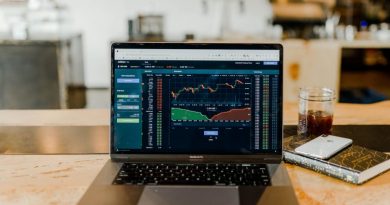Tax breaks for investing in renewable energy – Frequently asked questions
What is Section 12B?
Section 12B of the South African Income Tax Act allows a tax deduction for assets owned and brought into use for the first time for electricity generation from renewable sources.
What is the business model?
Twelve B Green Energy Fund is the vehicle to raise capital to fund the installation and management of solar power systems which generates electricity for approved commercial and industrial companies, and large residential complexes, on the strength of long-term power purchase agreements (PPAs) with monthly cash flows.
What is the investment structure of the fund?
The Twelve B Green Energy Fund is structured as an en commandite partnership. The en commandite partnership structure is most commonly used by private equity fund managers in South Africa.
It comprises two categories of partners:
- Undisclosed limited liability partners – the investors into Twelve B Green Energy Fund.
- The general partner (Twelve B GP).
The two categories of partners enter into the partnership agreement and co-own the assets in which the fund invests. Investors contribute a fixed sum in exchange for a percentage share in the partnership. The liability of the investors is limited to their capital contribution into the fund.
The net income earned by the partnership is attributed to the investors in accordance with the ratio of ownership as set out in the partnership agreement.
Who can invest in the fund and qualify for a Section 12B tax allowance?
Individuals, trusts, and companies can invest into the fund. Pension funds are permitted to invest in the fund as governed by Regulation 28 of the Pension Fund Act.
What is a limited partner (LP)?
An investor in the partnership whose liability is limited to their capital contribution into the fund.
What is a general partner (GP) in Twelve B Green Energy Fund?
The general partner has unlimited liability and has ultimate management control of the partnership.
What is a PPA?
A power purchase agreement (PPA) is a long-term electricity supply agreement between the partnership being the energy producer and an offtaker. The PPA sets out the amount of electricity to be supplied, the initial pricing, the annual escalations, and penalties for non-compliance.
What is an offtaker?
An offtaker is a consumer (i.e. a sectional title complex, industrial or commercial landlord) that will acquire the renewable energy generated from the qualifying assets located at their premises.
As an investor, what are my expected returns?
The fund is targeting an internal rate of return (IRR) to investors of 14% – 15%, net of fees and taxes.
The “cash on cash” returns are estimated to be 12%, net of fees and taxes on the risk capital.
What is the internal rate of return (IRR)?
The IRR is a metric used to estimate the return on the investment.
What is the risk profile of an investment into the fund?
The investment risk profile is moderate.
The funds will be deployed into a portfolio of solar projects in different locations, with different offtakers, with their own electricity requirements. Each project will be governed by a long-term PPA, which sets out the amount of electricity to be supplied, the initial pricing and the annual escalations.
All solar equipment is covered by an all-risks insurance policy for lightning, floods, theft, etc. Counterparty risk is mitigated as the solar equipment being movable and can be moved to another site if required.
What are income distributions?
The profits of the partnership which have been generated from the sale of electricity, net of costs, are distributed to investors.
How often will I get income distributions?
Distributions will be made by the fund twice per year in September and March. The first distribution will be in September 2023.
Is the fund regulated?
Yes, it is regulated by the Financial Sector Conduct Authority (FSCA).
Who is the fund administrator?
The fund is managed and administered by Grovest, the pioneers of Section 12J, which operationalised the first Section 12J fund in 2014. The Section 12J market grew to over R12 billion when the sunset clause was reached in June 2021. Today, Grovest is the largest administrator of Section 12J funds, with over R3.5 billion in assets under administration.
What is the Section 12B allowance in terms of the South African Income Tax Act and how does it work?
Section 12B entitles a taxpayer to an income tax deduction equivalent to the cost of any machinery, plant, utensil, implement, or article provided the following requirements are met:
- The qualifying assets are owned by the taxpayer.
- The qualifying assets were brought into use by the taxpayer for the first time and used for trade in generating various forms of renewable electricity.
Where the qualifying asset produces photovoltaic solar energy not exceeding 1 megawatt, the entire cost of the qualifying asset may be deducted in the year of assessment in which the qualifying asset is brought into use.
If the project generates more than 1 megawatt, the wear and tear allowance can be claimed over three years. i.e Year 1, 50%; Year 2 – 30%; Year 3 – 20%.
In terms of the investment mandate of the fund, at least 70% of capital contributions will be invested in projects under 1 megawatt.
Can an investor carry forward his Section 12B allowance to successive tax years?
Yes it may be carried forward to the successive year, and set off future taxable income.
How do I treat the Section 12B deduction and income distributions received from the fund in my income tax return?
Once the financial statements of the fund have been audited by the fund’s auditors, a detailed tax summary will be distributed to each investor.
This summary will confirm the amount of the Section 12B deduction as well as the share of profits that should be included in your tax return for the tax year ended February each year. You can then submit this with your tax return, or ask your tax practitioner to do so.
How long is the rund term?
Ten years.
What is the difference between Section 12B allowance and Section 12J allowance?
| Section 12J | Section 12B |
| Fixed capital structure. | En commandite partnership structure |
| Investments can be deducted from taxable income in the tax year in which the investment was made. | Investments can be deducted from taxable income in the tax year when energy is generated. |
| 5-year holding period. | No holding period. |
| Limited to R2.5 million p.a. for individuals and trusts; and R5 million p.a. companies. | No limit on investments. |
| Capital gains tax. | No capital gains tax. |
| Can be high risk. | Moderate risk. |
| Not tax efficient. | Tax efficient due to flow-through principle. |
| Maximum of R50 million investment per qualifying company. | No limit per qualifying company. |
| Can invest in a multitude of investments (excl. sin businesses). | Only invest in energy producing assets. |
| LP can only hold up to 20% of the fund. | Unlimited investment holding in Twelve B Green Energy Fund. |
What happens when the fund term is reached?
After the 10-year fund term, the portfolio of assets will be sold to a third party on an arm’s length basis. The fund term may be extended for a further two years if required. This is at the discretion of the general partner in terms of the partnership agreement.
Can I redeem my investment before the gund term?
If an investor needs to redeem their investment before the end of the fund term, he/she will need to request this from the fund manager.
Subject to the working capital requirements of the fund, the fund manager may repurchase your investment at an appropriate discount.
What are the tax consequences of redeeming my investment?
If an investor disposes of their investment before the end of the fund term, or at the end of the fund term, the investment will be subject to a portion of the recoupment of the Section 12B allowance originally claimed by the investor.
The recoupment is based on the value of the solar assets at the time of disposal and is to be included in the investor’s tax return in the year in which the investment is sold.
What are the fees to invest in the fund?
Set-up fee:
A set-up fee of 1% (once off) of capital raised is paid to the manager.
Management fee:
A management fee of 2% per annum is paid to the manager on the capital invested. This fee is paid quarterly in arrears.
Performance fee:
The manager will earn a performance fee of 20% of all distributions paid to investors after returning the risk capital to investors.
Is the fund Shariah compliant?
All monies received from Shariah investors, will be invested into a Shariah compliant bank account until deployed into qualifying assets.
What is a deed of adherence?
A deed of adherence is a supplementary legal document that is used to bind a new investor to the existing partnership agreement.
How does the Section 12B tax deduction work?
A: Investor invests R100,000 in March 2023.
The full amount is invested into the solar kit that starts generating energy in May 2023.
The investor can deduct the full R100,000 from their taxable income for the year ended February 2024.
B: Investor invests R100,000 in March 2023.
Only R70,000 is invested into the solar kit that starts generating energy in the year ended February 2024.
The investor can deduct R70,000 from their taxable income for the year ended February 2024. The balance of R30,000 can be deducted from taxable income in the following tax year when the balance of the solar kit comes into operation.
We will endeavour to give investors the opportunity to deduct their Section 12B allowance in the year in which they make the investment.
As such, we will be raising capital in tranches of R200 million on a first come, first serve basis.
How does Twelve B select investments for the fund?
The investment committee will consider investments based on the following:
- The offtaker must be credit-worthy with historic electricity invoices to validate usage.
- The offtaker must enter into a long term power purchase agreement.
What is the current investment pipeline?
The fund will be investing in a portfolio of renewable energy projects focused on sectional title complexes and select commercial and industrial installations. These installations incorporate the latest technology in solar panels, inverters, and battery storage.
These are spread across various sectors – multi-family residential, retail, and industrial offtakers. They are also geographically spread across South Africa.
Currently, the team has approximately R80 million of potential deals in the pipeline.
What are the risks of this investment?
- Non-payment by offtakers. However, the portfolio is made up of a number of offtakers, so each offtaker will only represent a small portion of the fund. One can also repurpose the solar kit for another offtaker at an alternate site.
- Helioscope projections are utilised to size qualifying assets to ensure that energy production is matched to usage.
What are the minimum and maximum investments in the fund?
The minimum investment is R100,000. There is no maximum investment amount.
How are prospective projects sourced?
The projects emanate from various sources including engineering, procurement and construction contractors (EPCs), operations and maintenance contractors (O&M), with whom the fund has an association, or perhaps the offtakers themselves.
In the current environment and severe crisis in the availability of electricity in South Africa, it is self-evident that there will be numerous projects which require funding.
Projects also emanate from word of mouth, landlords, managing agents, and property developers.
Who approves an investment in a project?
All projects are approved by an experienced investment committee before they are implemented. The investment committee will select a diversified portfolio of projects to mitigate for concentration risk.
What is ESG?
Environmental, social, and governance (ESG) investing refers to a set of standards that socially conscious investors use to screen investments. Twelve B Green Energy Fund is an ESG investment committed to sustainability.
Also View:
South Africans can now get tax breaks for investing in renewable energy




